ISSUE NO. 31: HOW TO SATISFY INCREASING INVESTOR DEMANDS FOR REPORTING ON STAKEHOLDER INTERESTS
Blackrock’s 2021 Proxy Voting Guidelines for Shareholders call on companies to undertake appropriate due diligence to understand and manage risks related to the interests of their key stakeholders. As with many new environmental, social & governance (ESG) reporting guidelines from investors, it may not be clear to companies how to meet this expectation. Fortunately, social performance specialists have standardized practices for identifying and prioritizing stakeholders and their interests as well as for mapping those priorities into business strategy.
Here’s a quick overview of steps we routinely undertake to help clients with world-class stakeholder mapping that not only helps meet investor expectations, but reveals otherwise unforeseen issues and perspectives that may have strategic implications. Follow these steps to better reporting and more resilient business planning for 2021.
-
IDENTIFY STAKEHOLDER INTEREST
Brainstorm those stakeholders with the greatest interest in your business. ‘Interest’ need not imply a financial stake; rather, these are people and groups that may care enough to focus on what you do and how / how well you do it! Engage a diverse but focused group from across your business for a brainstorming session. Don’t overthink this – just work together to quickly build a list of the groups and individuals who you believe have an interest in your business. Try starting with 20-30 so you don’t feel overwhelmed – you can go back and expand from there later. Apply a simple ranking to the level of interest for each stakeholder (Low/Medium/High, or 1-5).
-
IDENTIFY STAKEHOLDER INFLUENCE
Next, rank the level of influence or impact each stakeholder may have on your business success. Why do this after listing those that demonstrate interest? Stakeholders are self-defined—too often a highly interested stakeholder who may become increasingly influential is overlooked when focusing first on only the most influential third parties. We’ve seen many host-community environmental groups become far more influential to a business’s success over time than regulatory agencies. When we start with ‘interested’ we can ask ourselves: ‘does this stakeholder have potential (or plans) to become more influential in the future?
-
VISUALIZE PRIORITIES

Once you’ve ranked the interest and influence of key stakeholders, start to map them to visualize priorities for business planning and communications. A variety of tools are available to support stakeholder mapping – your company’s External Relations or CSR teams may have platforms readily available. But before you jump to integrating what’s been learned, there are two more important steps.
-
ARTICULATE KEY ISSUES
Brainstorm key stakeholder issues as a third dimension on top of stakeholder interest and influence. By identifying the ESG issues of most importance by stakeholder to reveal the issues of greatest concern to your internal and external stakeholders, you can benchmark these against your current business strategy & reporting and the criteria you use in making decisions. Try to be specific (for example, go beyond “climate” to specify if the key issue of concern is total carbon footprint, transition risk or other).
-
UNDERSTAND STAKEHOLDER NETWORKS
Just as your business leverages relationships to optimize results, so do your stakeholders. Make sure you understand and map those relationships (think of the importance of social networking algorithms used by Facebook and LinkedIn to predict multi-stakeholder behavior, for example) so you can anticipate and manage interests and issues not only at the individual stakeholder level, but by focusing on the networks themselves as well.
-
INTEGRATE FINDINGS INTO YOUR STRATEGY
Map the key interests, influences and issues of your key stakeholders and their networks against your business strategy and communications plans to identify gaps and opportunities for strengthening your business resiliency. Test your KPIs and decision-making criteria to ensure they are sensitive to these interests and issues (they may be helpful indicators of the next black swan event for you), and adjust as needed.
Meeting increased investor expectations for identifying stakeholder interests and integrating them into business decision-making should not be a high cost/high uncertainty/limited value exercise. If done right, stakeholder mapping will catalyze reliable, better-informed and more resilient business planning for the road ahead.
Acorn International delivers the expertise, solutions and assurance that global businesses need to thrive in high-risk environments amidst community opposition, environmental liabilities and shareholder activism.
Let us help you with stakeholder mapping and ESG strategy development/implementation.
WE HELP GOOD COMPANIES BE GOOD NEIGHBORS.
News & Notes

Acorn International
1702 Taylor St, Suite 200B
Houston, TX 77007, USA
1213 Purchase St
New Bedford, MA 02740, USA

